176. Taita Falcon Falco fasciinucha (Taitavalk)
Order: Falconiformes. Family: Falconidae
Description
28-30 cm. A small short-tailed falcon with Peregrine-like proportions. The upper-parts are dark blueish grey, becoming black on the head with a rufous nape patch and dark moustachial stripe. Underparts are a rich rufous colour with narrow dark streaks. It has a white throat and white cheeks. In flight shows a profile similar to a Peregrine Falcon but has a rufous-orange breast and underwing coverts. Cere, orbital ring and legs are yellow. Sexes similar.
Juveniles resemble adults, but have buff feather margins on the upperparts and generally reduced rufous patches on side and back of head and more heavily streaked below.
Similar species: It resembles the African Hobby, but differs in having rufous patches on the nape and a white throat.
Distribution
Occurs in a band from Ethiopia through western Kenya to northern Tanzania, with isolated populations in southern Zambia, Malawi and southern Africa. Within southern Africa it is rare in patches of Zimbabwe and central Mozambique, and South Africa. The South Africa population is estimated at around 25 birds, of which 8 pairs are known to breed at the Strijdom tunnel in the Limpopo province, South Africa. This is the only known nest in South Africa. A few birds have been seen on occasion in the same mountain range (Drakensberg mountains) in the Limpopo province by a BirdLife S.A. survey team in 2007.
Habitat
Large cliffs and gorges, especially those below the Victoria Falls in Zimbabwe and Zambia.
Diet
It almost exclusively eats small birds caught aerially, usually near a cliff.
Breeding
Monogamous, territorial solitary nester with a long-term pair bond. The nest is typically a simple scrape in a depression or sheltered rock ledge, on a large vertical crag or a less prominent cliff overlooking woodland or a river valley. It has also been once recorded to use the stick nest of White-necked Raven. Egg-laying season is from August-October. It lays 3-4 eggs which are mainly incubated by the female for about 34 days. The chicks are fed about ten times per day, leaving the nest after about 42 days and sometimes remaining dependent on their parents for at least another two months.
Call
Typical falcon like high pitched screaming kree-kree-kree and kek-kek-kek.
Status
Rare resident.
Africa Wild Bird Book
Taita Falcon
Dewi
What is the good of having a nice house without a decent planet to put it on? (H D Thoreau)
What is the good of having a nice house without a decent planet to put it on? (H D Thoreau)
Taita Falcon Photos
176. Taita Falcon Falco fasciinucha
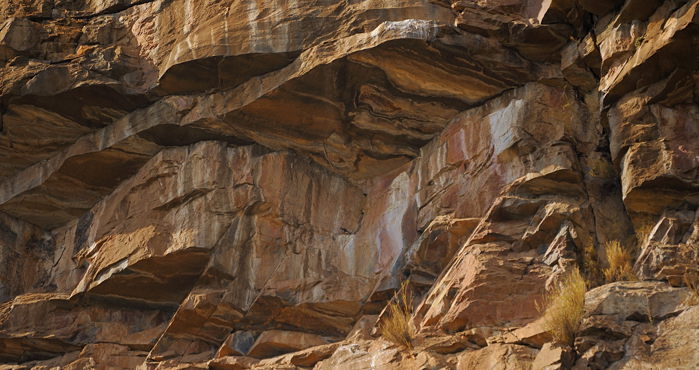
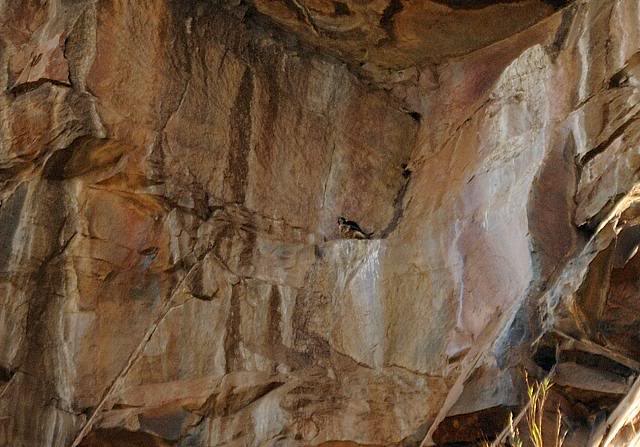
Links:
Species text Sabap1: http://sabap2.adu.org.za/docs/sabap1/176.pdf
Sabap2: http://sabap2.adu.org.za/spp_summary.ph ... §ion=3
Jenkins, A. 2007. On the trail of the Taita. Africa - Birds & Birding 12(3):35-37.
Global Raptor Information Network: http://www.globalraptors.org/grin/Speci ... pecID=8238
Bird Life South Africa. Find rare birds


Links:
Species text Sabap1: http://sabap2.adu.org.za/docs/sabap1/176.pdf
Sabap2: http://sabap2.adu.org.za/spp_summary.ph ... §ion=3
Jenkins, A. 2007. On the trail of the Taita. Africa - Birds & Birding 12(3):35-37.
Global Raptor Information Network: http://www.globalraptors.org/grin/Speci ... pecID=8238
Bird Life South Africa. Find rare birds
Dewi
What is the good of having a nice house without a decent planet to put it on? (H D Thoreau)
What is the good of having a nice house without a decent planet to put it on? (H D Thoreau)
ORDER OTIDIFORMES
ORDER OTIDIFORMES
Family Otididae (Bustards)
As formerly defined, the Gruiforme order included the Otitidae family. This definition rendered "Gruiformes" non monophylic since phylogenomic analyses showed that Cuculiformes (Cuckoos) would then be included in it. Monophyly was restored by recognizing Otidiformes, Cuculiformes and the newly defined Gruiformes as separate orders. Bustards, including korhaans make up the family Otididae (formerly known as Otidae).
All bustards are shy, wary, keen-sighted birds of the open, treeless country. They normally walk with a dignified, elegant gait. They fly reluctantly, but powerfully and usually depend on running to escape their enemies.
Some of the paleoartic species perform extensive migrations, flying in typical crane fashion. While several African species are chicken sized, most of them are considerably larger. The Kori Bustard is the heaviest flying bird (male up to 19 kg), together with the Great Bustard of Eurasia (the largest male on record weighted 16 kg). In most bustards, males are substantially larger than females, often about 30% longer and sometimes more than twice the weight. They are among the most sexually dimorphic groups of birds.
Bustards feed on ants, crickets, locusts and other insects but plants are also a significant part of their diet.
Females lay two, three and occasionally four or five speckled eggs on the ground, making little or no nest, once a year. Incubation lasts 22 days, but at day 21 chicks make a hole in their shells, they begin to breathe, this is called the pipage.
Many have interesting mating displays, such as inflating throat sacs or elevating elaborate feathered crests.
Bustards walk steadily on strong legs and big toes, pecking for food as they go. Most prefer to run or walk over flying. They have long broad wings with "fingered" wingtips, and striking patterns in flight. The wings have 10 primaries and 16-24 secondary feathers. There are 18-20 feathers in the tail. The plumage is predominantly cryptic.
Family Otididae (Bustards)
As formerly defined, the Gruiforme order included the Otitidae family. This definition rendered "Gruiformes" non monophylic since phylogenomic analyses showed that Cuculiformes (Cuckoos) would then be included in it. Monophyly was restored by recognizing Otidiformes, Cuculiformes and the newly defined Gruiformes as separate orders. Bustards, including korhaans make up the family Otididae (formerly known as Otidae).
All bustards are shy, wary, keen-sighted birds of the open, treeless country. They normally walk with a dignified, elegant gait. They fly reluctantly, but powerfully and usually depend on running to escape their enemies.
Some of the paleoartic species perform extensive migrations, flying in typical crane fashion. While several African species are chicken sized, most of them are considerably larger. The Kori Bustard is the heaviest flying bird (male up to 19 kg), together with the Great Bustard of Eurasia (the largest male on record weighted 16 kg). In most bustards, males are substantially larger than females, often about 30% longer and sometimes more than twice the weight. They are among the most sexually dimorphic groups of birds.
Bustards feed on ants, crickets, locusts and other insects but plants are also a significant part of their diet.
Females lay two, three and occasionally four or five speckled eggs on the ground, making little or no nest, once a year. Incubation lasts 22 days, but at day 21 chicks make a hole in their shells, they begin to breathe, this is called the pipage.
Many have interesting mating displays, such as inflating throat sacs or elevating elaborate feathered crests.
Bustards walk steadily on strong legs and big toes, pecking for food as they go. Most prefer to run or walk over flying. They have long broad wings with "fingered" wingtips, and striking patterns in flight. The wings have 10 primaries and 16-24 secondary feathers. There are 18-20 feathers in the tail. The plumage is predominantly cryptic.
Family Otididae Index
Species indigenous to southern Africa:
ORDER OTIDIFORMES
Family Otididae (Bustards)
Ardeotis kori Kori Bustard 230
Neotis denhami Denham's Bustard 231
Neotis ludwigii Ludwig's Bustard 232
Eupodotis senegalensis White-bellied Bustard (Includes Barrow‘s Korhaan as a ssp) 233
Eupodotis caerulescens Blue Korhaan 234
Eupodotis vigorsii Karoo Korhaan 235
Eupodotis rueppellii Rüppell's Korhaan 236
Lophotis ruficrista Red-crested Korhaan 237
Lissotis melanogaster Black-bellied Bustard 238
Afrotis afra Southern Black Korhaan 239
Afrotis afraoides Northern Black Korhaan 239
ORDER OTIDIFORMES
Family Otididae (Bustards)
Ardeotis kori Kori Bustard 230
Neotis denhami Denham's Bustard 231
Neotis ludwigii Ludwig's Bustard 232
Eupodotis senegalensis White-bellied Bustard (Includes Barrow‘s Korhaan as a ssp) 233
Eupodotis caerulescens Blue Korhaan 234
Eupodotis vigorsii Karoo Korhaan 235
Eupodotis rueppellii Rüppell's Korhaan 236
Lophotis ruficrista Red-crested Korhaan 237
Lissotis melanogaster Black-bellied Bustard 238
Afrotis afra Southern Black Korhaan 239
Afrotis afraoides Northern Black Korhaan 239
- Bushveld Jock
- Posts: 2001
- Joined: Sat Jun 02, 2012 3:52 pm
- Contact:
Kori Bustard
230. Kori Bustard Ardeotis kori (Gompou)
Order: Otidiformes. Family: Otitidae
Description
Size 110-140 cm. The largest bustard and one of the world's heaviest flying birds; flight heavy and laboured. Neck finely barred grey; dark crest on rear of crown. Yellow eyes. In flight, it may be distinguished from Denham's Bustard and Ludwig's Bustard by its uniformly speckled, grey upperwing, which lacks conspicuous white markings.
Sexes similar, female has black on crown reduced and less prominent eyebrow. Juvenile has paler crown than adult.
Distribution
Northern Cape, Botswana, Namibia. Found in Kruger, but not in rest of Limpopo and Mpumalanga.
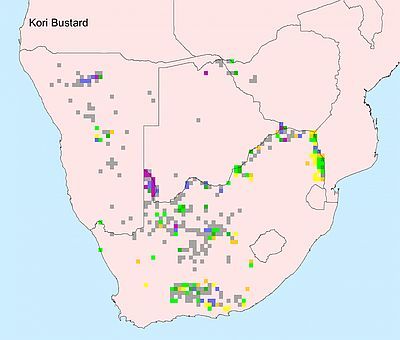
Habitat
Occurs in semi-arid savanna and grassland, usually near cover of trees.
Diet
Wide range of insects, especially ding beetles, lizards, chameleons, snakes and carrion. Seeds, berries, bulbs, wild melons and Acacia gum.
Breeding
Polygynous (one male mates with multiple females), territorial solitary nester. The male does a courtship display to multiple females, he struts around with his head cocked, bill open and its neck inflated four times, all while giving a booming call. The nest is a shallow scrape in the ground, often reusing the same site in multiple breeding seasons. Egg-laying season is from July-April, peaking from October-February. It lays 1-2 eggs, which are incubated by solely by the female for 23-25 days. The female solely takes care of the chicks, who are able to fly when they are 3-4 months old.
Spoor

Call
Main call by male at call-sites is a series of clicks followed by ventriloquial kyip-kyip-kyip notes.
Status
Uncommon to locally common resident; mostly sedentary but with some local movements. Listed as Vulnerable. Found singly or in loose groups in non-breading season.
Order: Otidiformes. Family: Otitidae
Description
Size 110-140 cm. The largest bustard and one of the world's heaviest flying birds; flight heavy and laboured. Neck finely barred grey; dark crest on rear of crown. Yellow eyes. In flight, it may be distinguished from Denham's Bustard and Ludwig's Bustard by its uniformly speckled, grey upperwing, which lacks conspicuous white markings.
Sexes similar, female has black on crown reduced and less prominent eyebrow. Juvenile has paler crown than adult.
Distribution
Northern Cape, Botswana, Namibia. Found in Kruger, but not in rest of Limpopo and Mpumalanga.

Habitat
Occurs in semi-arid savanna and grassland, usually near cover of trees.
Diet
Wide range of insects, especially ding beetles, lizards, chameleons, snakes and carrion. Seeds, berries, bulbs, wild melons and Acacia gum.
Breeding
Polygynous (one male mates with multiple females), territorial solitary nester. The male does a courtship display to multiple females, he struts around with his head cocked, bill open and its neck inflated four times, all while giving a booming call. The nest is a shallow scrape in the ground, often reusing the same site in multiple breeding seasons. Egg-laying season is from July-April, peaking from October-February. It lays 1-2 eggs, which are incubated by solely by the female for 23-25 days. The female solely takes care of the chicks, who are able to fly when they are 3-4 months old.
Spoor

Call
Main call by male at call-sites is a series of clicks followed by ventriloquial kyip-kyip-kyip notes.
Status
Uncommon to locally common resident; mostly sedentary but with some local movements. Listed as Vulnerable. Found singly or in loose groups in non-breading season.
Kgalagadi: Dec 2015
KNP Maroela, Shingwedzi & Pretoriuskop: March 2016
KNP Maroela, Shingwedzi & Pretoriuskop: March 2016
- Bushveld Jock
- Posts: 2001
- Joined: Sat Jun 02, 2012 3:52 pm
- Contact:
Kori Bustard Photos
230. Kori Bustard Ardeotis kori (Gompou)
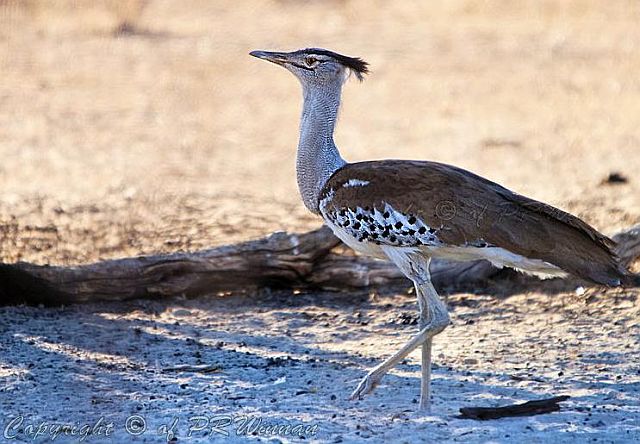
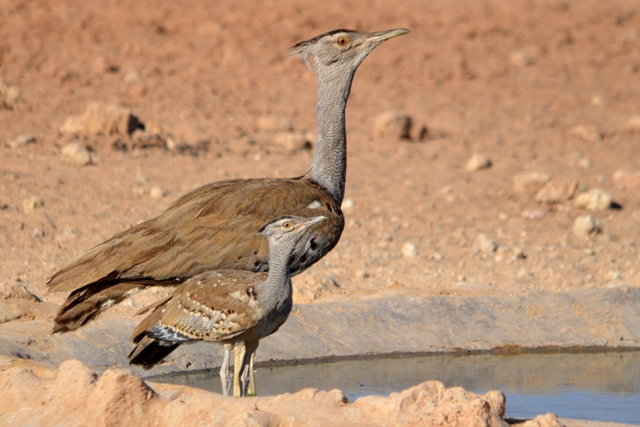 © Mel
© Mel
Kgalagadi Transfrontier Park
 © Sprocky
© Sprocky
Display
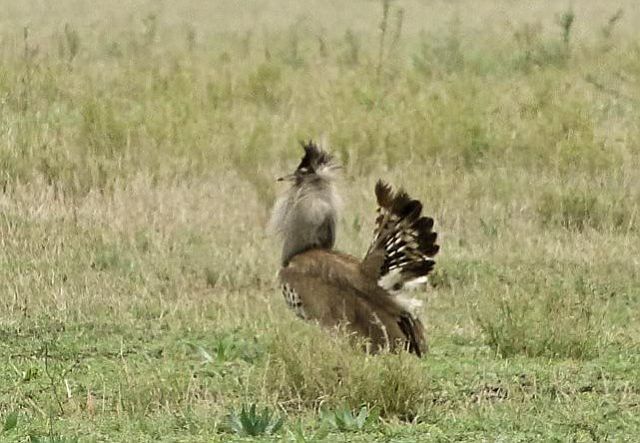 © JustN@ature
© JustN@ature
 © ExFmem
© ExFmem
Links:
Species text Sabap1
Sabap2: http://sabap2.adu.org.za/spp_summary.ph ... §ion=3
Birds of Botswana
Oiseaux net: http://www.oiseaux-birds.com/card-kori-bustard.html
Ian Sinclair. SASOL VOELS VAN SUIDER AFRICA (3de UIT)
Bustards, in: Trevor Carnaby. Beat about the Bush: Birds

 © Mel
© MelKgalagadi Transfrontier Park
 © Sprocky
© SprockyDisplay
 © JustN@ature
© JustN@ature © ExFmem
© ExFmemLinks:
Species text Sabap1
Sabap2: http://sabap2.adu.org.za/spp_summary.ph ... §ion=3
Birds of Botswana
Oiseaux net: http://www.oiseaux-birds.com/card-kori-bustard.html
Ian Sinclair. SASOL VOELS VAN SUIDER AFRICA (3de UIT)
Bustards, in: Trevor Carnaby. Beat about the Bush: Birds
Kgalagadi: Dec 2015
KNP Maroela, Shingwedzi & Pretoriuskop: March 2016
KNP Maroela, Shingwedzi & Pretoriuskop: March 2016
Ludwig's Bustard
232. Ludwig's Bustard Neotis ludwigii (Ludwigse Pou)
Order: Otidiformes. Family: Otitidae
Description
Size: 95 cm. Weight: 3 kg. Wingspan: 1.8 m. Males are much larger than females. Smaller than Kori Bustard. Back is patterned with various shades of black and brown with paler chevrons. Underparts white. Hindneck is rich rufous red, seperated from the dark brown foreneck by a white or grey stripe. Head is dark brown with white supercillium. The female is noticeable smaller than the male and is paler on the foreneck.
This species is most likely to be confused with Denham's Bustard but differs in having a dark brown throat and foreneck, but lacks a pale central crown stripe and shows less white in the wings.
Distribution
Near-endemic to southern Africa, occurring from south-western Angola south through western and southern Namibia to the Northern Cape and adjacent provinces.
Habitat
Arid Savanna and Karoo scrubland.
Diet
It mainly eats arthropods, small vertebrates and plant matter, forages by slowly walking and pecking for grasshoppers, beetles, locusts, caterpillars, ants, spiders, centipedes, scorpions, reptiles and rodents. Also eats berries, seeds and leaves.
Breeding
Polygynous, with each male defending a small territory from which he displays to passing females, often mating with several of them in a single breeding season. The nest is a shallow scrape in the ground, sometimes ringed by pebbles, typically placed close to the male's display site among concealing vegetation. Eggs are laid from February-May in Namibia, September-February in the Nama Karoo and from July-September in the Karoo and Bushmanland. The female lays 1-3 eggs, which are incubated solely by the female. The chicks are cared for by the female only, who sometimes lays flat with them to avoid detection by predators.
Call
The call, heard during courtship, is a deep-voiced klop ... klop ...klop.
Status
Fairly common, near endemic resident. Ludwig's bustard is classified as Endangered (EN) on the IUCN Red List , as it is frequently killed by man-made traps and collisions with overhead lines.
Order: Otidiformes. Family: Otitidae
Description
Size: 95 cm. Weight: 3 kg. Wingspan: 1.8 m. Males are much larger than females. Smaller than Kori Bustard. Back is patterned with various shades of black and brown with paler chevrons. Underparts white. Hindneck is rich rufous red, seperated from the dark brown foreneck by a white or grey stripe. Head is dark brown with white supercillium. The female is noticeable smaller than the male and is paler on the foreneck.
This species is most likely to be confused with Denham's Bustard but differs in having a dark brown throat and foreneck, but lacks a pale central crown stripe and shows less white in the wings.
Distribution
Near-endemic to southern Africa, occurring from south-western Angola south through western and southern Namibia to the Northern Cape and adjacent provinces.
Habitat
Arid Savanna and Karoo scrubland.
Diet
It mainly eats arthropods, small vertebrates and plant matter, forages by slowly walking and pecking for grasshoppers, beetles, locusts, caterpillars, ants, spiders, centipedes, scorpions, reptiles and rodents. Also eats berries, seeds and leaves.
Breeding
Polygynous, with each male defending a small territory from which he displays to passing females, often mating with several of them in a single breeding season. The nest is a shallow scrape in the ground, sometimes ringed by pebbles, typically placed close to the male's display site among concealing vegetation. Eggs are laid from February-May in Namibia, September-February in the Nama Karoo and from July-September in the Karoo and Bushmanland. The female lays 1-3 eggs, which are incubated solely by the female. The chicks are cared for by the female only, who sometimes lays flat with them to avoid detection by predators.
Call
The call, heard during courtship, is a deep-voiced klop ... klop ...klop.
Status
Fairly common, near endemic resident. Ludwig's bustard is classified as Endangered (EN) on the IUCN Red List , as it is frequently killed by man-made traps and collisions with overhead lines.
Dewi
What is the good of having a nice house without a decent planet to put it on? (H D Thoreau)
What is the good of having a nice house without a decent planet to put it on? (H D Thoreau)
Ludwig's Bustard Photos
232. Ludwig's Bustard Neotis ludwigii
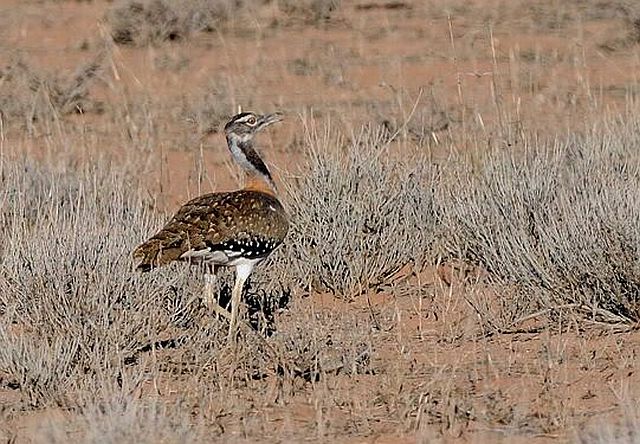 © Dewi
© Dewi
Male
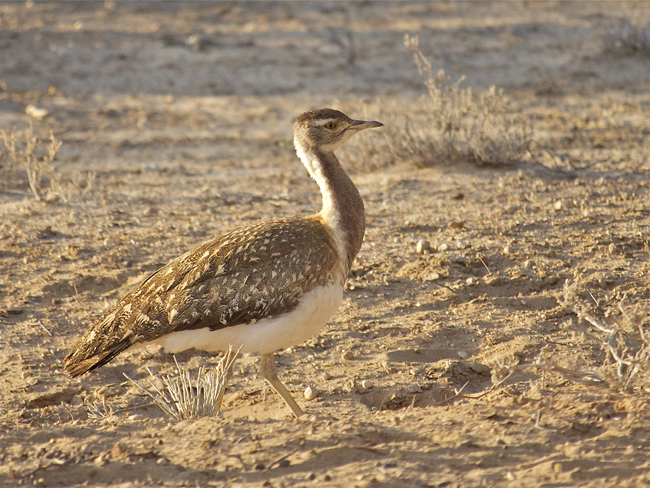 © ExFmem
© ExFmem
Female, Kgalagadi Transfrontier Park
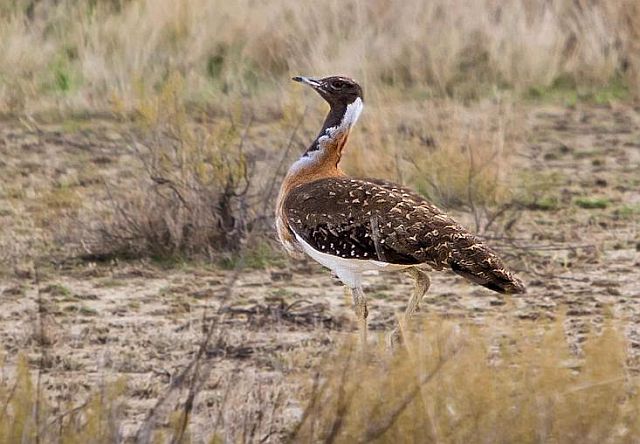 © PRWIN
© PRWIN
Male
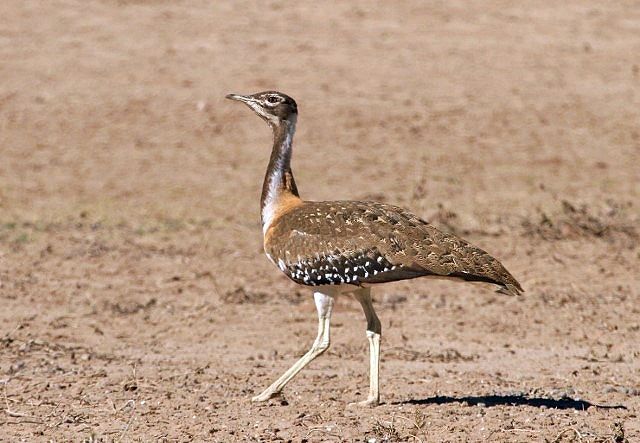 © nan
© nan
 © nan
© nan
Female
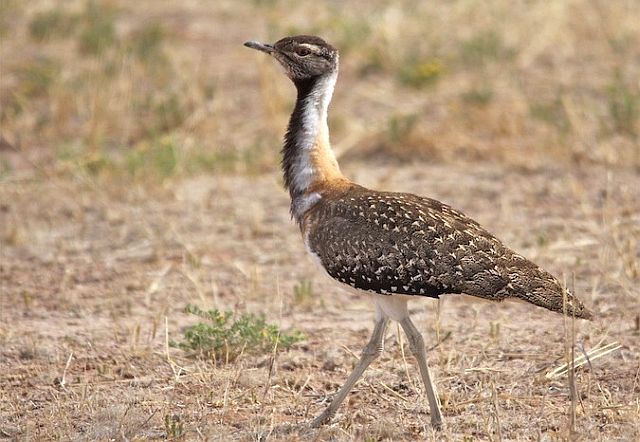 © ExFmem
© ExFmem
Links:
Species text in The Atlas of Southern African Birds: http://sabap2.adu.org.za/docs/sabap1/232.pdf
Sabap2: http://sabap2.adu.org.za/spp_summary.ph ... §ion=3
Birds of Botswana
Bustards, in: Trevor Carnaby. Beat about the Bush: Birds
Allan, D.G. 2004. Display of Ludwig’s Bustard
 © Dewi
© DewiMale
Female, Kgalagadi Transfrontier Park
 © PRWIN
© PRWINMale
 © nan
© nan © nan
© nanFemale
 © ExFmem
© ExFmemLinks:
Species text in The Atlas of Southern African Birds: http://sabap2.adu.org.za/docs/sabap1/232.pdf
Sabap2: http://sabap2.adu.org.za/spp_summary.ph ... §ion=3
Birds of Botswana
Bustards, in: Trevor Carnaby. Beat about the Bush: Birds
Allan, D.G. 2004. Display of Ludwig’s Bustard
Dewi
What is the good of having a nice house without a decent planet to put it on? (H D Thoreau)
What is the good of having a nice house without a decent planet to put it on? (H D Thoreau)
- nan
- Posts: 26478
- Joined: Thu May 31, 2012 9:41 pm
- Country: Switzerland
- Location: Central Europe
- Contact:
Denham's Bustard
231. Denham's Bustard (formerly known as Stanley's Bustard) Neotis denhami (Veldpou)
Order: Otidiformes. Family: Otididae
Description
Size: 84-116 cm. The pale crown stripe, throat and pale grey foreneck are diagnostic in the male. The hindneck and mantle are rufous, the sides of the neck white, and the foreneck is grey in males and brownish-grey in females. The back is brown, darker and plainer in the male, and the underparts are white. Its grey crown is bordered with black, and a black line runs through the eye with a white line forming an eyebrow above. The wings are strikingly patterned in brown, white and black,the male showing more white in flight than the female. The long legs are yellowish in color and the bill is whitish horn in color.
Displaying male inflates the throat and forms a conspicuous balloon of white feathers.
Juvenile and female have less white in the wings when flying and have brown speckling on the neck.
Similar species: The similar Ludwig's Bustard has a dark throat and foreneck, and has less white in the wing. Male is considerably larger than female, with a darker, plainer back.
Distribution
Widespread in sub-Saharan Africa, excluding lowland forest and deserts. In southern Africa it is locally common in southern and eastern South Africa, while scarce in northern Botswana and north-eastern Zimbabwe.
Habitat
Recently burnt fynbos, open grassland and agricultural land. It breeds in grassland and lowland fynbos, but in the non-breeding season it also strays into cultivated fields of barley, cotton and clovers. It also occurs in Nama karoo and sparse woodland.
Diet
It is omnivorous, feeding on a wide range of animals, including grasshoppers, weevils, spiders, and even snakes, as well as plant products, such as grass, leaves and flowers.
Breeding
Polygynous, with the male performing an elaborate courtship display to attract females, some of which he mates with. The eggs are laid directly on the ground, with enough surrounding vegetation to conceal the female when she is incubating. Egg-laying season is from September-December. It lays 1-2 eggs, which are incubated solely by the female for 23-25 days. She usually incubates for 82% of the day, only leaving the nest if she needs to feed. The chicks are cared for by their mother, who will catch food and put into in front of the chicks, although later they start foraging for themselves.
Call
Largely silent.
Status
Uncommon resident at the coast; inland populations tend to move to lower altitudes during winter. Globally near-threatened, but vulnerable in South Africa, largely due to habitat loss, snaring, poisoning, hunting and human disturbance. For example, its population in the Gordon's Bay area in the Western Cape disappeared in 1937 due to construction of a road.
Order: Otidiformes. Family: Otididae
Description
Size: 84-116 cm. The pale crown stripe, throat and pale grey foreneck are diagnostic in the male. The hindneck and mantle are rufous, the sides of the neck white, and the foreneck is grey in males and brownish-grey in females. The back is brown, darker and plainer in the male, and the underparts are white. Its grey crown is bordered with black, and a black line runs through the eye with a white line forming an eyebrow above. The wings are strikingly patterned in brown, white and black,the male showing more white in flight than the female. The long legs are yellowish in color and the bill is whitish horn in color.
Displaying male inflates the throat and forms a conspicuous balloon of white feathers.
Juvenile and female have less white in the wings when flying and have brown speckling on the neck.
Similar species: The similar Ludwig's Bustard has a dark throat and foreneck, and has less white in the wing. Male is considerably larger than female, with a darker, plainer back.
Distribution
Widespread in sub-Saharan Africa, excluding lowland forest and deserts. In southern Africa it is locally common in southern and eastern South Africa, while scarce in northern Botswana and north-eastern Zimbabwe.
Habitat
Recently burnt fynbos, open grassland and agricultural land. It breeds in grassland and lowland fynbos, but in the non-breeding season it also strays into cultivated fields of barley, cotton and clovers. It also occurs in Nama karoo and sparse woodland.
Diet
It is omnivorous, feeding on a wide range of animals, including grasshoppers, weevils, spiders, and even snakes, as well as plant products, such as grass, leaves and flowers.
Breeding
Polygynous, with the male performing an elaborate courtship display to attract females, some of which he mates with. The eggs are laid directly on the ground, with enough surrounding vegetation to conceal the female when she is incubating. Egg-laying season is from September-December. It lays 1-2 eggs, which are incubated solely by the female for 23-25 days. She usually incubates for 82% of the day, only leaving the nest if she needs to feed. The chicks are cared for by their mother, who will catch food and put into in front of the chicks, although later they start foraging for themselves.
Call
Largely silent.
Status
Uncommon resident at the coast; inland populations tend to move to lower altitudes during winter. Globally near-threatened, but vulnerable in South Africa, largely due to habitat loss, snaring, poisoning, hunting and human disturbance. For example, its population in the Gordon's Bay area in the Western Cape disappeared in 1937 due to construction of a road.
Kgalagadi lover… for ever
https://safrounet.piwigo.com/
https://safrounet.piwigo.com/
- nan
- Posts: 26478
- Joined: Thu May 31, 2012 9:41 pm
- Country: Switzerland
- Location: Central Europe
- Contact:
Denham's Bustard Photos
231. Denham's Bustard (formerly known as Stanley's Bustard) Neotis denhami (Veldpou)
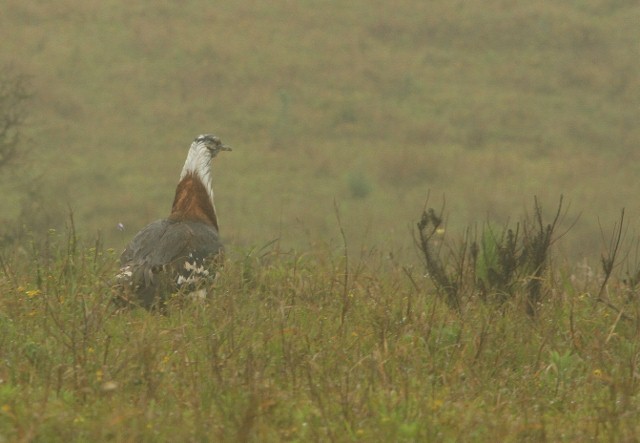
Addo Elephant National Park
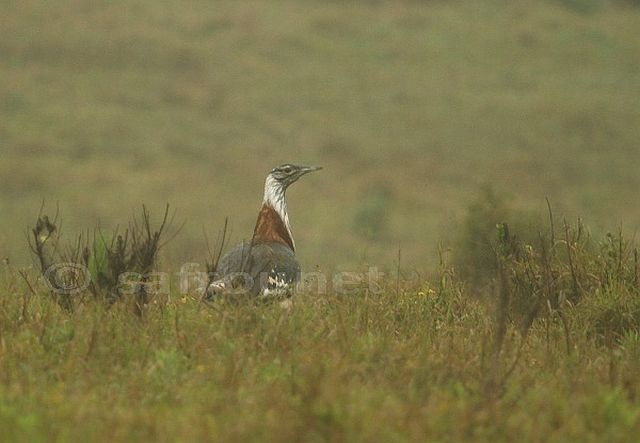
Male
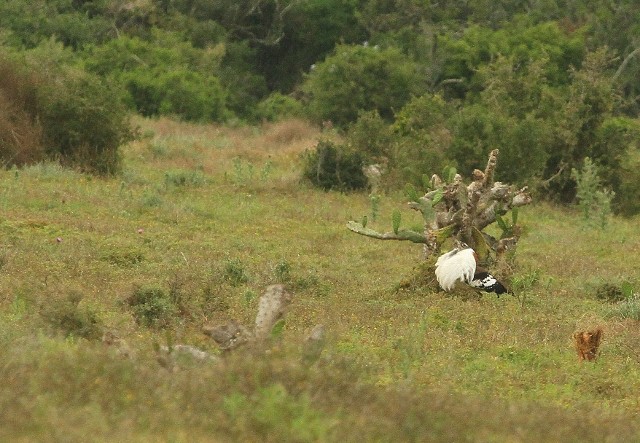
Displaying males show long white plumes on the neck and breast as they inflate their neck – 'balloon' display.
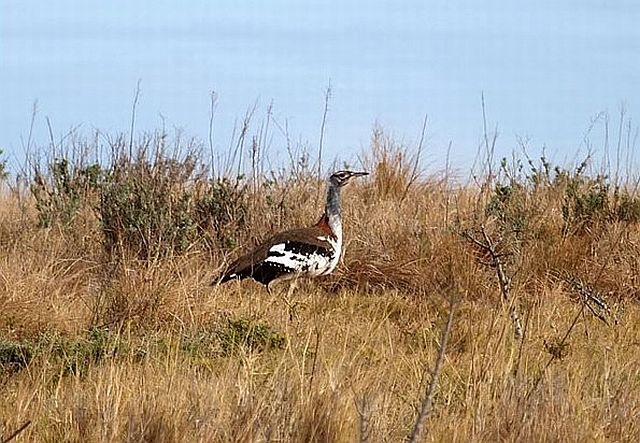 © PJL
© PJL
Addo Elephant National Park
De Mond Nature Reserve © graham
Links:
http://sabap2.adu.org.za/docs/sabap1/231.pdf
http://sabap2.adu.org.za/spp_summary.ph ... §ion=3
Birds of Botswana
Ian Sinclair. SASOL VOELS VAN SUIDER AFRICA (3de UIT)
NEWMAN'S VOELS VAN SA (8ste UIT)

Addo Elephant National Park

Male

Displaying males show long white plumes on the neck and breast as they inflate their neck – 'balloon' display.
 © PJL
© PJLAddo Elephant National Park
De Mond Nature Reserve © graham
Links:
http://sabap2.adu.org.za/docs/sabap1/231.pdf
http://sabap2.adu.org.za/spp_summary.ph ... §ion=3
Birds of Botswana
Ian Sinclair. SASOL VOELS VAN SUIDER AFRICA (3de UIT)
NEWMAN'S VOELS VAN SA (8ste UIT)
Kgalagadi lover… for ever
https://safrounet.piwigo.com/
https://safrounet.piwigo.com/


